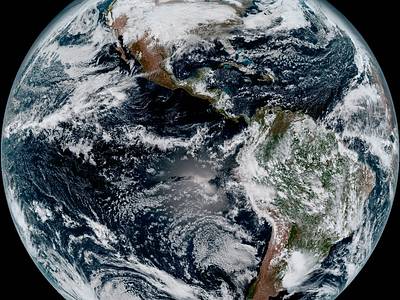Climate Changed: Millions of Americans Already Living Beyond Temperature Goal
(This post was co-authored by Nat Keohane and David Festa)

The hotter future that climate pollution is creating has already arrived for 1 in 10 Americans. A new analysis from The Washington Post shows that 34 million Americans live in areas that have now seen average temperatures rise farther than the goal set by the Paris climate agreement — 2 degrees centigrade or about 3.6 degrees Fahrenheit.
Even as the Trump administration attempts to dismantle policies to reduce climate pollution, average temperatures have shot up in parts of North Dakota, Montana, Utah, in the Northeast and Southwest, and elsewhere. These increases – which are not summer spikes, but year-round averages – are part of the trend that is worsening wildfires, making more damaging storms, and creating serious problems for farmers.
The Post‘s Steven Mufson, Chris Mooney, Juliet Eilperin, and John Muyskens surveyed more than 100 years of weather data about the continental United States from the National Oceanic and Atmospheric Administration, NASA and other scientific sources. Their work provides a bold-face headline to the peer-reviewed science that shows the dangerous speed at which our world is warming. It comes on the heels of last week’s United Nations report on land use and climate change, which warned of increasing water scarcity and food shortages from continued warming.
If there is good news in these disturbing reports, it is that the tangible reality of climate change may be spurring action to reduce emissions and begin the long overdue process of building resilience. Despite the Trump administration’s surrender on the issue, many states are newly aggressive. New Jersey, one of the states that the Washington Post reports is getting hottest fastest, just enacted a series of climate pollution reduction policies. Minnesota, California, and Maine – all states with areas of 2-degree increase – have recently put in place ambitious climate action policies. Colorado, another state with hotspots, just enacted landmark legislation that sets some of the strongest targets in the country for reducing climate pollution.
We can’t solve the climate crisis without leadership from the federal government, but there are paths forward to a better outcome. Failing to act because we hear bad news will only make the problem tougher. If we can generate the political will, we can make our future dramatically safer by moving to a 100% clean economy.
With renewable energy more affordable than ever – solar is almost 90% cheaper than it was a decade ago – and important new technologies in development, we’ve shown we have the ability to act in our own defense. By producing no more climate pollution than we can remove (through technology, storing more carbon in forests, and other means) by 2050, we can keep the world as a whole from the dangerous warming the Paris agreement is meant to prevent.
It’s long past time to do everything we can to both limit pollution and get ready for the changes we know are ahead. As the report vividly demonstrates, climate change is already here, we’re also working on ways to make society more resilient to its impacts – expanding natural infrastructure to protect against storms and helping to rebalance water supply and demand in the parched West.
In Arizona, cities, farmers, tribes and other stakeholders negotiated an agreement to help the seven-state Colorado River Basin avert a crisis in Lake Mead, the nation’s largest reservoir, in the face of a nearly two-decade drought. In California, they’re developing the first groundwater trading market in the Central Valley designed to respond to a new state law that requires regions to balance their groundwater supply and demand. California passed the landmark law in 2014 after historic drought left many communities without access to clean drinking water.
In Louisiana, the problem is too much water – and residents in that conservative state are acutely aware of the danger. In a new poll released by EDF, more than half say climate change is affecting them now. Seventy percent say it will in the next five years. A coalition there is developing large-scale projects in response to a land loss crisis in which a football field of wetlands vanishes into open water every 100 minutes.
One lesson from the Washington Post report – and the drumbeat of worrying news on climate – is that the future that we’ve long warned about is beginning to arrive today. That makes it all the more critical that we build resilience even as we move aggressively to a 100% clean energy economy. Because we’ve waited so long to act, we must protect ourselves from the consequences of past pollution even as we work towards a cleaner future.












